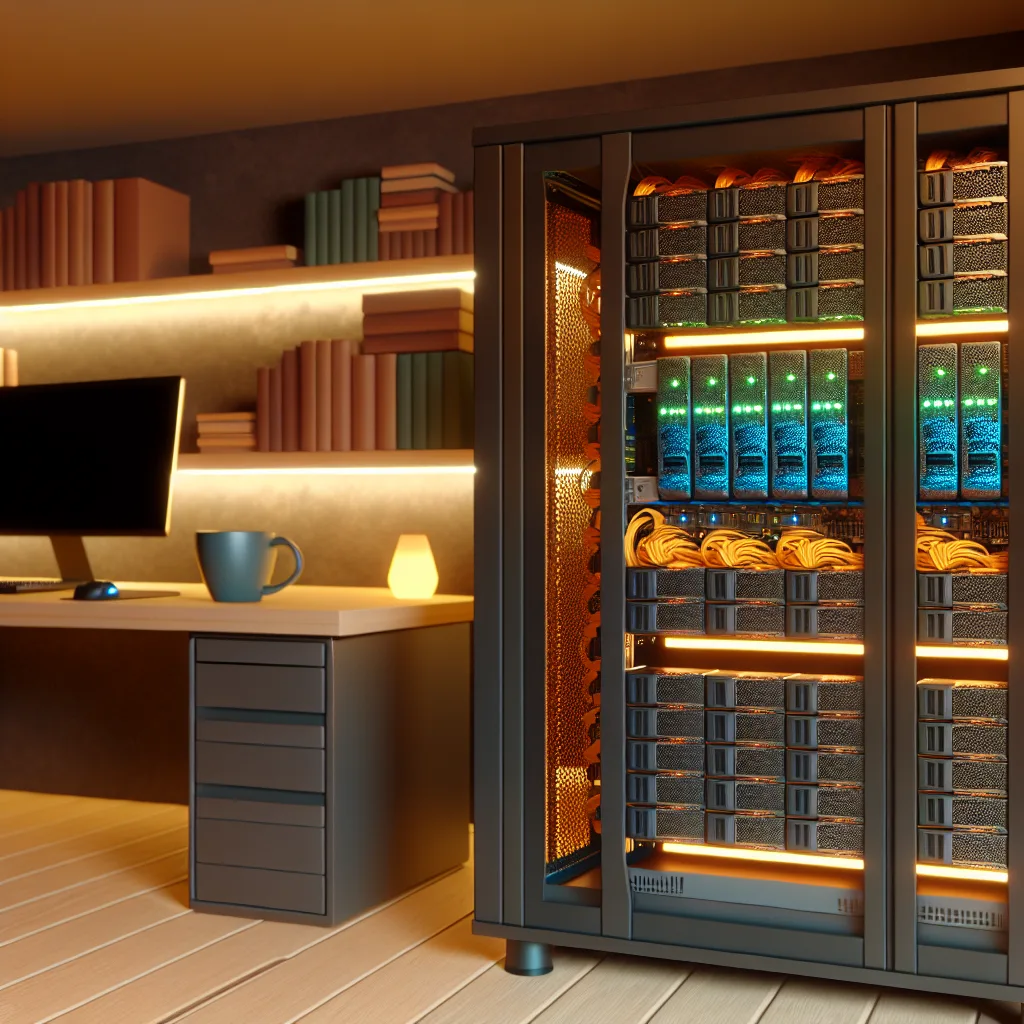Exploring the fun and basics of home server setup for hobbyists and tech enthusiasts alike.
If you’re thinking about diving into the world of homelabing, building your own rig can be a surprisingly rewarding experience. When I first started my home server setup, I wasn’t looking to create the most powerful machine, but rather, I wanted a practical and fun project to learn from. Let me walk you through the basics of my journey, which might just inspire your own adventure.
My Starting Point: A Simple Home Server Setup
The heart of my setup is a Supermicro motherboard, equipped with two Intel E5-2690 v4 processors. These are solid choices for multitasking and running multiple applications at once without breaking the bank. Alongside these CPUs, I installed 90GB of 2400 MHz ECC memory. ECC memory is great for servers because it helps prevent data corruption, which adds an extra layer of reliability.
For graphics, I chose to mix things up by adding an NVIDIA RTX 4000 workstation card paired with a GTX 1070 that I picked up for just $20 — a steal! While graphics cards aren’t always crucial for a server, having some GPU power can be really helpful if you plan to do anything like media streaming or light gaming.
Storage-wise, I’m running a 1TB Samsung SATA SSD as the boot drive for faster startup and responsiveness. Plus, I’ve added six 500GB Toshiba hard drives and a couple of 1TB drives that were already lying around. Although it’s not a huge amount compared to what some enthusiasts have, it’s plenty for my needs and a good way to repurpose old hardware.
Choosing Your Software: Windows 10 and Beyond
Right now, I’m running Windows 10 Home on the server since that’s what I’m familiar with. If you’re new to this, sticking to what you know at first is a good call. But as you get comfortable, there are plenty of other options to explore. For instance, Linux-based server OSes like Ubuntu Server or FreeNAS offer great tools for file sharing, backups, and even media streaming.
Here are some ideas to consider for your home server software:
– Media servers: Plex or Jellyfin can serve your movies and music across devices smoothly.
– Virtualization tools: Platforms like Proxmox or VMware ESXi allow you to run multiple virtual machines.
– Backup and storage: FreeNAS/TrueNAS for organizing your drives and backing up important data.
Want to learn more about setting up a home server OS? Check out the comprehensive Ubuntu Server Guide or get into FreeNAS on the TrueNAS website.
Why Home Server Setup is Worth Trying
Building a home server may sound daunting at first, but the process teaches you a lot about hardware compatibility, networking, and managing data. Plus, it can be genuinely enjoyable tinkering with the components and software—much like a hobby.
You don’t need the flashiest gear. Some folks build with old parts for learning; others go all out. Either way, it’s about what works for you and what you want to get from it. My setup is modest, but it has been a fantastic way to experiment and grow my skills.
Getting Started Tips
- Start simple: Use hardware you already have before investing in new parts.
- Document your setup: It helps troubleshooting later.
- Join forums or communities: Sites like ServeTheHome offer tons of advice.
- Experiment with software: Don’t be afraid to try new OS or apps that match your interests.
If you’re interested in home server setup, just take the plunge! It’s okay to learn as you go, and there’s a big and friendly community out there to help.
Hope this gives you a clear picture and maybe even some encouragement to start your own build. Feel free to share your setup or ask questions!
Sources:
- Intel E5-2690 v4 specs: https://www.intel.com/content/www/us/en/products/sku/83495/intel-xeon-processor-e5-2690-v4-35m-cache-2-60-ghz/specifications.html
- NVIDIA RTX 4000: https://www.nvidia.com/en-us/design-visualization/quadro-rtx-4000/
- ECC Memory explanation: https://www.crucial.com/articles/about-memory/what-is-ecc-memory
